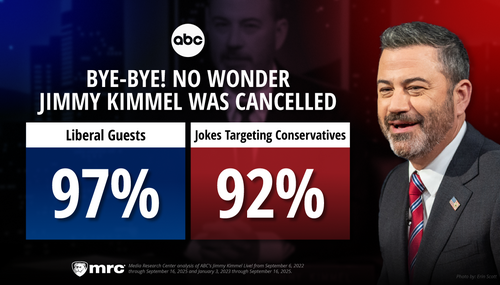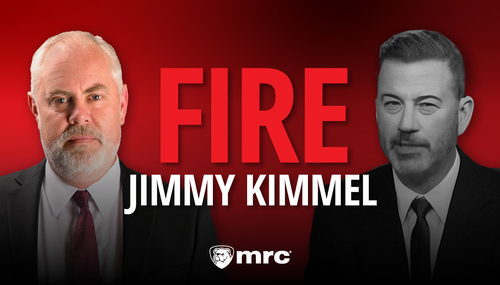Media
Continue to Attack Drug Companies with Misinformation
Your mother might have told you
that if you say something enough times, youll start to believe its
true. And while thats fine if youre trying to build a
little-engine-that-could mentality in a six-year-old, its not okay
for grown-ups trying to do journalism.
No, grown-ups need facts, and those facts are often
backed up by numbers. Thats where things can get dicey. Reporters
shouldnt take numbers from any side in a debate without checking
them out. But if you decide something is true and keep repeating it
in the news, people will believe you.
New York Times reporter Gardiner Harris did just that
in a March 4 story in which he declared without attribution that
The drug industry has long spent billions of dollars annually far
more than it spends on research trying to persuade doctors to
prescribe its pills.
Thats just not true. Numbers reported by the companies
themselves reveal the opposite. And marketing can mean lots of
things including drug samples that actually reduce prescription
costs for patients who need to try new drugs. Tufts Universitys
Center for the Study of Drug Development, an academic nonprofit
research group, publishes a yearly study on the pharmaceutical
industry. In its Outlook 2005, the center estimated a seven-year
process for bringing a new drug to market. Tufts has also conducted
several studies to determine the average cost of bringing a drug to
market. The most recent update to that study, in 2001, estimated
$802 million.
Figures reported by member companies of the
Pharmaceutical Research and Manufacturers of America (PhRMA) for
2003 show more than $33 billion spent on R&D. In contrast, total
marketing expenses were reported at $25.3 billion, with only $3.3
billion of that in direct-to-consumer advertising.
Broadcast news coverage of Marcia Angells recent book
release is probably the greatest source of misinformation about this
subject. Angell, an M.D. who previously edited The New England
Journal of Medicine, authored The Truth About the Drug Companies:
How They Deceive Us and What to Do About It. She made the rounds on
the broadcast circuit when the book was released in the fall of
2004.
In one chapter of her book, Angell dismissed Tufts
figures on bringing new drugs to market and came up with her own,
even though she admitted she doesnt have the information needed to
make such an estimate. She proceeded to shave about $600 million
magically from the industrys estimate. Her fuzzy-math solution was
to take an industrywide total for one years R&D costs and divide by
the number of new drugs put on the market. This calculation is
absurd. For one thing, it does not allow for the multi-year process
required to develop a drug and bring it to market. Also, Angells
marketing figures are inflated, because she combined
direct-to-consumer advertising with all other forms of marketing,
including prescription samples, and administrative costs.
But one great thing about America is that you can write
a book and the book tour will follow. In Angells case, on Sept. 2,
2004, NBCs Today gave her free rein to promote her ideas in
September with no one questioning them. She lumped together
marketing and administration in her assessment. That meant she
combined the seemingly countless costs of running a business with
the marketing of the products. Then she said drug companies spend
far less on research and development. In fact, her appearance on
the show was devoted to hammering the point that drug companies
actually spend less than they make in profits. Imagine a public
company trying to make a profit.
Angell also criticized the amounts and percentages
spent on R&D on CBS Sunday Morning, Oct. 10, 2004. CBS reporter
Martha Teichner, however, is to be commended for using a realistic
figure: $3 billion in direct-to-consumer drug advertising.
Of course, all of this is based on criticizing a
company for being profitable. On ABCs Oct. 12, 2004, Nightline,
Ted Koppel and Jake Tapper painted a picture of an America where
people are choosing between buying food and buying prescriptions
and pointed to the drug companies as the culprit. Tapper even
suggested that price controls were the answer, tying the lower cost
of drugs in Canada to that system.
Although Angell was already interviewed extensively in
the report, Tapper reiterated her points when interviewing Alan
Holmer, then head of PhRMA. To Tappers credit, he did pose the
question, Whats wrong with profits? However, he did not follow up
on Angells answer: Well, you cant make the case that your prices
have to be high to cover R&D if your profits are greater than the
R&D. This was another criticism (using wrong figures) of the
percentage spent on R&D, while all parties ignored the simple laws
of supply and demand.
Whats the result of such stories? The Washington Post
reported last month on a study by the Kaiser Family Foundation,
stating that 70 percent of respondents think the pharmaceutical
companies are more concerned about making profits than developing
new drugs. When it came to trusting drug companies justification
for research, 81 percent did not believe the companies are putting
as much money into research as they say. It seems as if Dr. Angells
version of the truth, passed on through the media, has circulated
widely.
Resources
-
Demonizing Drugmakers: The Political Assault on the Pharmaceutical
Industry by Doug Bandow, senior fellow at the Cato Institute:
-
Improving Health Care: A Dose of Competition, a July 2004 report
from the Federal Trade Commission and the Department of Justice:
-
This is the link to the Tufts' 2005 Outlook:
http://csdd.tufts.edu/InfoServices/OutlookPDFs/Outlook2005.pdf
-
This is the link to the Center for the Study of Drug Development
home page.





